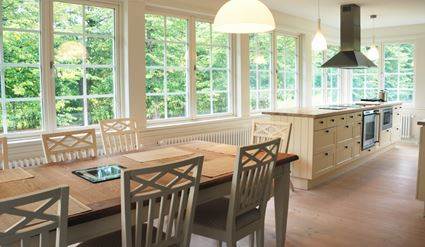
The Glue Talk Blog

Quality sealant is a critical component of high quality insulating glass (IG). There are a wide variety of window sealant technologies available to insulating glass manufacturers, including two-part reactives, reactive hot melts and non-reactives, like polyisobutylene. Each of these technologies has its own benefits and challenges. For example, butyl is a cost-effective insulated glass sealant technology that has been widely used for decades. With its straight-forward processability and proven performance, it’s no wonder why butyl sealants remain so popular.
Butyl sealants are easy to apply and require no pre-mixing equipment. Since butyls do not cure, they produce no reactive byproducts, are isocyanate free, remain re-workable and have a longer shelf-life. Unlike two-part glass sealants, like polysulfide, polyurethane and silicone, butyl rubber sealants achieve full strength within minutes of application, allowing for immediate handling. H.B. Fuller’s butyl sealants are designed to flow smoothly and resist sag at application temperature, and most can be used across application equipment types and sealant/spacer configurations.
There are many properties inherent to butyl rubber that make it a desirable component of insulated glass sealants. Butyl rubber innately has a low gas and moisture vapor permeability, which is vital for maintaining a fog-free and argon-filled window for the duration of its lifetime. It has a high degree of elasticity, which lends itself to exceptional vibrational damping characteristics. This elasticity gives the sealant the ability to withstand the repeated stresses associated with expansion and contraction of insulated glass air space that comes with seasonal and daily temperature fluctuations. Butyl sealant also has a low glass transition temperature, meaning that it remains flexible at low temperatures, maintaining elasticity and adhesion to glass in cold climates.
At H.B. Fuller, we formulate glass sealants that enhance these intrinsic beneficial properties of butyl rubber to provide our customers with a sealant that has exceptional resistance to ultraviolet light, remains flexible and resilient over wide-ranging environmental conditions, and forms and maintains a strong adhesive bond to glass. Butyl sealants are an economical, tried-and-true option for IG manufacturers.
H.B. Fuller’s window sealant experts will be at GlassBuild America in Las Vegas on Oct. 19 – 21, 2016. Stop by booth #914 to hear more about butyl and other IG sealant technologies. If you cannot make the show or to learn more about butyl and all the sealants offered by H.B. Fuller, visit our website or email us.
Blog Categories
Blog Categories
Archive
- 2024
- 2023
- 2022
-
2021
- January (3)
-
February (7)
- Celebrating Exceptional Service During COVID-19 Complications
- Cyanoacrylates: What They Are and What They Do
- Innovative two-shot bookbinding adhesive
- Make a Difference 2020
- Problem Solving: Paper Straws in Drinking Beverages
- Stronger straws sustainable future
- Substances of Interest in Disposable Absorbent Hygiene Products
- March (4)
- April (4)
- May (4)
- June (5)
- July (2)
- August (5)
- September (2)
- October (1)
- November (3)
- December (2)
-
2020
- January (4)
- February (2)
- March (3)
- April (4)
- May (3)
-
June (7)
- Community Support in the Era of Coronavirus
- HBFuller Employee Creates Face Shields with 3D Printer
- Improved Packaging Integrity and Greater Customer Satisfaction
- Liquid-Resistant Paper Straws
- What is a Sealant?
- What Is the Future of Commercial Disinfectants?
- Winning over consumers with e-commerce packaging solutions
-
July (6)
- Employees Take Action to be Part of Healing and Growth
- Gain a competitive advantage with packaging adhesive solutions
- HB Fuller Company Foundations Commitment to Communities
- Packaging Solutions for the South African Agriculture Market
- Supporting Organizations That Provide STEM Education for Youth
- Where Does Sustainability Stand Amid COVID-19
- August (3)
- September (2)
- October (4)
- November (2)
- December (4)
